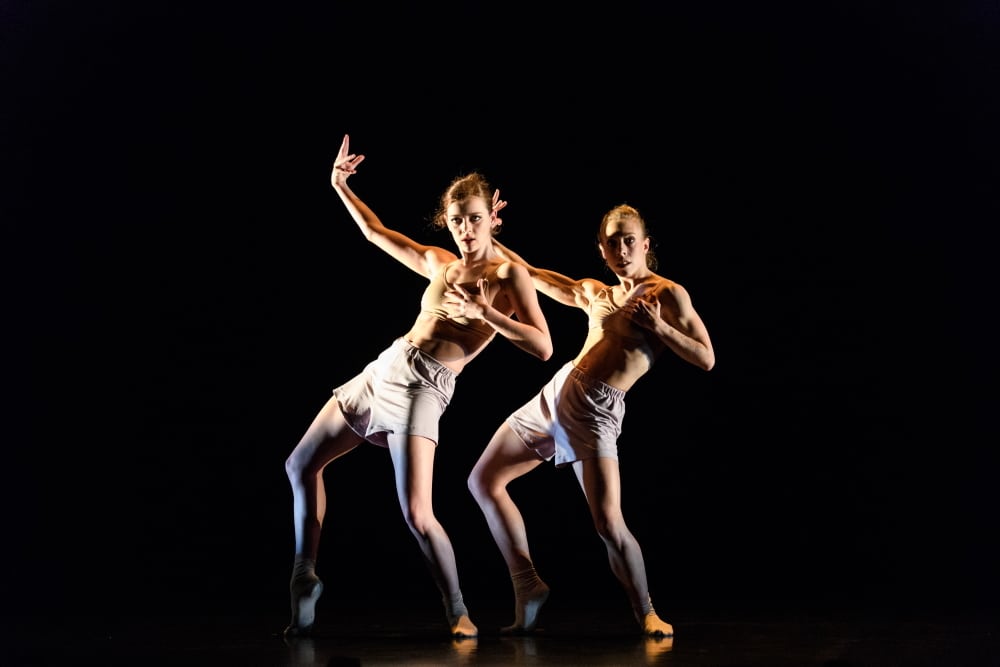Spring Dances
It was a tri-polar night—but in a good way—last weekend, with a trio of high-energy, beautifully crafted works performed by the spectacular members of L.A. Dance Project.
Continue Reading
World-class review of ballet and dance.
Tonight's little surprise, a small bonus routine, comes in the form of dancer and choreographer Jack Webb's incredible new work “Drawn to Drone,” performed by soloist Christopher Harrison and with a hypnotic soundscape by Webb himself. Using two white chairs only, Harrison enters the space, methodically strips down to underwear and sits on the lined-up chairs, tentatively stretching and contorting his limbs, which seem to move independently of his body. His arms and legs raise up in slow motion, and the focus is entirely concentrated on the geometric shapes he creates. He seems like an astronaut on a space flight simulator, where the chairs are becoming like extensions of his body. It is reminiscent at times of David Bowie in Nicolas Roeg's classic The Man Who Fell to Earth, where the young Bowie sits isolated in a room, an alien in a hostile planet. An intense, mesmerising piece, with almost sci-fi precision, it is impossible to take your eyes off the wonderful Harrison.
Performance
Place
Words

Scottish Ballet in “Sibilo,” choreography by Sophie Laplane. Photograph by Jane Hobson


“Uncommonly intelligent, substantial coverage.”
Already a paid subscriber? Login
It was a tri-polar night—but in a good way—last weekend, with a trio of high-energy, beautifully crafted works performed by the spectacular members of L.A. Dance Project.
Continue ReadingOn a mild spring night, the New York City Ballet held a similarly temperate Gala performance. The flower arrangements were lovely, the speeches were okay, the two premieres weren’t bad, and the Balanchine excerpt was sturdy. In almost every way, it was an enjoyable—if not overly momentous—night at the ballet.
Continue ReadingSan Francisco Ballet artistic director Tamara Rojo may have taken on more drama than she bargained for programming a star-studded “Swan Lake” encore for the finale of her first season here.
Continue ReadingThe Flamenco Festival has been bringing Spain's greatest flamenco artists to New York City Center for twenty years.
FREE ARTICLE
comments